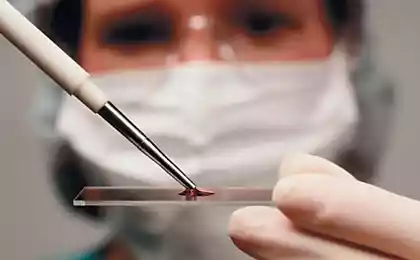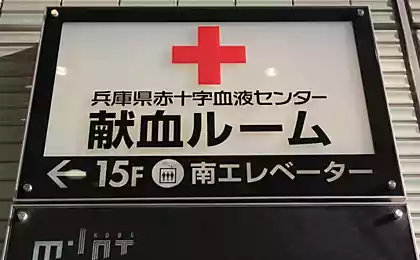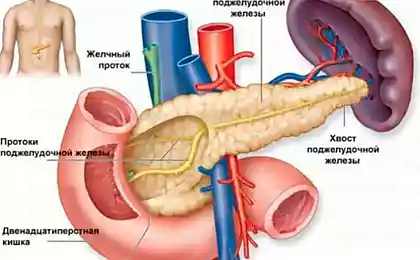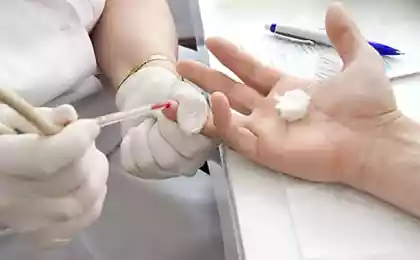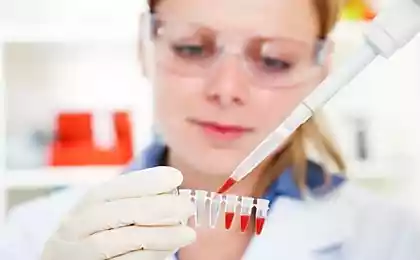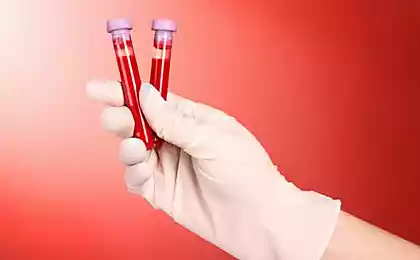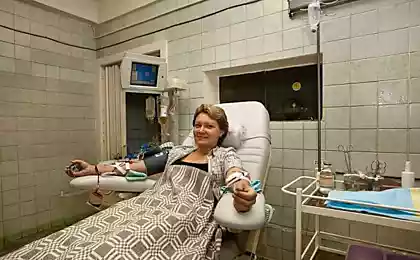773
Blood sugar: what to take and how to interpret the results
If you are interested in nutrition, you probably thought about what tests need to pass, how to evaluate the results. To ensure that you could accurately interpret their tests, we plan to create a series of materials for the diagnosis of metabolic disorders.
Please note, it is impossible to make a diagnosis and to determine drug therapy in absentia, we also do not encourage you to cancel your medical treatment.
Important: the primary diagnosis of disorders of carbohydrate metabolism and, especially, formulation of diagnosis, on the basis of indicators home glucometer is not available! This device can help you, but it makes sense to talk separately.
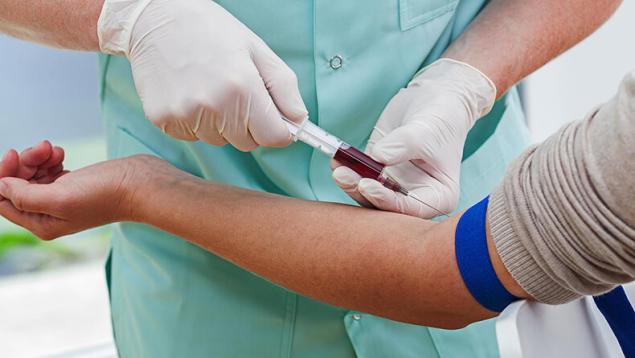
If you decide to stick to LCHF recommend pre-evaluate your condition to see for yourself how effective the system to normalize metabolism.
If you have diabetes, do not be upset and give up, the LCHF is the most correct, and will lead the sugar to normal. The only one in the medication you will likely have to adjust their dose.
Let's start with carbohydrate metabolism
So, I am often asked when to begin tests and what? Let's face it.
I blood fasting glucose (or "blood sugar")
This is the easiest and first analysis in disorders of carbohydrate metabolism, you can assign in the clinical examination, or when there are specific complaints. The analysis can be taken as of capillary blood from a fingertip or from a vein. No matter which method you choose to measure results to navigate you need to reference standards of a laboratory (they are always expressed in the form of tests, usually on the right), at the end of the article will be given a table to evaluate the results.
When it is necessary to take this analysis:
1. You have complaints, characteristic for metabolic glucose (dry mouth, increased thirst and urination, fatigue, constant hunger, in some cases, rapid weight loss, pustular skin diseases — furunculosis), which are not treated began to heal the wound appeared itching of the skin. Please note that women – difficult to treat, "no cause" a yeast infection, but for men erectile dysfunction, can be unique and (or) the first complaint when it makes sense to check blood glucose)
2. You have overweight, BMI>25
3. All people over the age of 40 years 1 once in three years, and after 45-50 years of more
4. You have signs of metabolic syndrome (excess weight with accumulation of fat mostly in the waist area, high blood pressure, lipid disorders, perhaps ischemic heart disease)
5. Family relatives have diabetes
6. All pregnant women, regardless of initial weight (at registration, in the second trimester (25-27 weeks) and closer to delivery before 32 weeks)
7. In the period of rapid hormonal changes (puberty, pregnancy, menopause, various endocrine disorders, e.g. hypothyroidism)
II glucose tolerance test (GTT)
It is a long but very informative test to determine the degree of glycemic disorders, or to diagnose diabetes. The value of this method increases, if in parallel to determine the level of insulin in the blood (this will be a separate article)
How does the test:
1. You will take a blood on an empty stomach
2. Then immediately after blood sampling you will need to drink a glucose solution (75 grams of pure glucose dissolved in 250-300 ml of water)
3. Re-analysis will take 2 hours
4. Sometimes prescribe analysis with intermediate points in 30 minutes and 3 hours.
What I want to warn you:
1. The test is indicated in all individuals who have blood sugar fasting showed the result of 6.1-6.9 mmol/L. this test identifies so-called "prediabetes".
2. This study prescribed to pregnant women in the second trimester, but the test can be scheduled earlier if the woman is at risk (a doctor will consider medical history, excessive weight and many other factors).
3. As part of the determination of insulin resistance in overweight, metabolic syndrome, when burdened heredity for diabetes.
Not everyone knows that the rate of glucose depends on many factors, so it is better to take seriously the preparation for delivery of the analysis.
How to prepare for testing blood sugar or pass the GTT
Interpretation of results:
determining
Figure of glucose, mmol/l
further steps
whole capillary blood (from finger)
plasma of blood (from a vein)
The NORM
on an empty stomach
3,3 5,6
< 6,1
You are healthy, and if you don't have excess weight, you fit the "liberal option" LCHF (with the amount of carbs to 50-60 grams, and with serious physical exertion, and to 100 grams per day, or up to 10% of all calories consumed)
2 hours after GTT
< A 7.8
< A 7.8
VIOLATION OF TOLERANCE TO GLUCOSE
on an empty stomach
5,6-6,1
6,1-7,0
Your condition can be regarded as prediabetes, it is best not to delay to switch to LCHF, with the restriction of carbs to 20-50 grams per day. To control the process by the blood glucose meter, or the analysis of glycated hemoglobin after 3 months.
2 hours after GTT
7,8-11,1
7,8-11,1
DIABETES
on an empty stomach
>6,1
>7,0
You have diabetes, you must immediately contact the doctor and pick up medications, or, depending on the results, you can only begin with respect for LCHF, continuing to be observed by a specialist. The amount of carbohydrates should be chosen more carefully, given your medication, especially in type 1 diabetes, when medication is not enough. You need a home glucose meter.
2 hours after GTT
>11.1 V
>11.1 V
random definition
>11.1 V
>11.1 V
GESTATIONAL DIABETES
on an empty stomach
>5,1
5, 1-7,0
If you are pregnant, it is very strict LCHF option for you undesirable, though the restriction of carbs 70-100 grams per day can help You control sugar and weight gain. Do you wish to have a home blood glucose meter.
1 hour after GTT
>10,0
2 hours after GTT
>8,5
3 hours after GTT
>7,8
If your levels of sugar in the blood expressed in mg% (mg/dl that means the same thing), they can be counted in mmol/l using the equation: mmol/l = mg%/18.
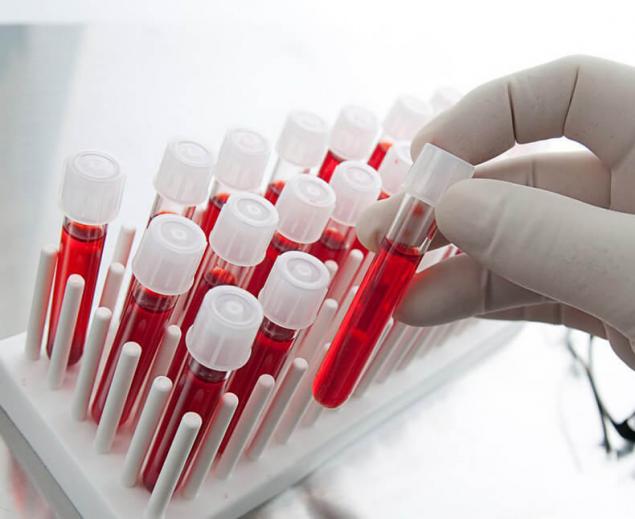
III Glycated (glikozilirovanie) hemoglobin HbA1c
Coupling of hemoglobin to glucose, allowing to estimate the level of glycemia on average for the 3 preceding months. Glycated hemoglobin reflects hyperglycemia that occurred during the life of erythrocyte (120 days). Erythrocytes circulating in the blood are of different age. Usually focus on the average term is 90 days. The level of glycated hemoglobin is an indicator of compensation of carbohydrate metabolism during this period. Normalization of the level of glycated hemoglobin in the blood is 4 to 6 weeks after achieving a normal glucose level.
This analysis, as a rule, appoint:
1. to confirm (or deny) presence of diabetes,
2. analysis is necessary in individuals who already have diabetes to control compensation and to assess the effectiveness of the therapy.
This analysis individuals with diabetes should be conducted 2-4 times per year. This analysis does not replace daily monitoring of glucose in established diabetes.
I often recommend that instead of a simple study of glucose on an empty stomach, if you have appropriate complaints, excess weight, just take the test for glycated hemoglobin, which will show the level of your sugars over the past three months. If the test results are "borderline" in the future, GTT will clarify the situation.
More convenient than this analysis? To him it is not necessary to specifically prepare analysis can be done not on an empty stomach, as the result does not depend on the time of delivery of the analysis and of food intake.
Interpretation of results:
This figure is in Russian laboratories is usually indicated in %. But in many countries uses the metric mmol/mol.
In healthy people, this level should not exceed 6%. In this case you can stick to LCHF, depending on your goals, for example to reduce the weight.
Level from 6 to 6.5% is considered as a violation of glucose tolerance, i.e., the person is at risk. You should take the test GTT as soon as possible to review your diet and start to follow the LCHF (more stringent), and to evaluate the results after three months.
The target level HbA1С may differ in patients with diabetes, depending on age, presence of complications and risk of hypoglycemia.
If you have high blood sugar level and high level HbA1С or just tests every 3 months twice show elevated levels of glycated hemoglobin, the doctor has the right to put you the diagnosis “diabetes”.
Level HbA1С above 6.5% can be considered as diabetes. You need a meter!
At the level HbA1С 6,5%-7,5% — the focus should be on the appointment of drug therapy (usually a drug in small doses if you stick to LCHF).
When HbA1С level of 7.5% -9% — without medical treatment until you do, you might want to assign more than one medicine. Of course, to comply with LCHF you need.
When HbA1С level above 9%, you need to prescribe insulin (either temporarily, or permanently, making your doctor in dynamics, depending on your diagnosis and associated moments). Limit the carbs you need! Choose LCHF you can, when you learn how to adjust the dose of insulin depending on the daily glucose levels before meals (at your meter) and the calculation of eaten (often with strict LCHF you must consider the amount of food eaten protein).
Do not leave without attention! The causes of morning headachesGrand MYTH about the FLU is true of Marva Oganyan
With regard to the specific recommendations of diet, drug therapy and evaluation patients with already identified with diabetes in the dynamics, it is a matter of individual approach, we strongly recommend to focus on General recommendations, study your body. Each case of diabetes occurs in different ways, explore your body with love and you will succeed!
P. S. And remember, only by changing their consumption — together we change the world! ©
Source: lchf.ru/8364
Please note, it is impossible to make a diagnosis and to determine drug therapy in absentia, we also do not encourage you to cancel your medical treatment.
Important: the primary diagnosis of disorders of carbohydrate metabolism and, especially, formulation of diagnosis, on the basis of indicators home glucometer is not available! This device can help you, but it makes sense to talk separately.

If you decide to stick to LCHF recommend pre-evaluate your condition to see for yourself how effective the system to normalize metabolism.
If you have diabetes, do not be upset and give up, the LCHF is the most correct, and will lead the sugar to normal. The only one in the medication you will likely have to adjust their dose.
Let's start with carbohydrate metabolism
So, I am often asked when to begin tests and what? Let's face it.
I blood fasting glucose (or "blood sugar")
This is the easiest and first analysis in disorders of carbohydrate metabolism, you can assign in the clinical examination, or when there are specific complaints. The analysis can be taken as of capillary blood from a fingertip or from a vein. No matter which method you choose to measure results to navigate you need to reference standards of a laboratory (they are always expressed in the form of tests, usually on the right), at the end of the article will be given a table to evaluate the results.
When it is necessary to take this analysis:
1. You have complaints, characteristic for metabolic glucose (dry mouth, increased thirst and urination, fatigue, constant hunger, in some cases, rapid weight loss, pustular skin diseases — furunculosis), which are not treated began to heal the wound appeared itching of the skin. Please note that women – difficult to treat, "no cause" a yeast infection, but for men erectile dysfunction, can be unique and (or) the first complaint when it makes sense to check blood glucose)
2. You have overweight, BMI>25
3. All people over the age of 40 years 1 once in three years, and after 45-50 years of more
4. You have signs of metabolic syndrome (excess weight with accumulation of fat mostly in the waist area, high blood pressure, lipid disorders, perhaps ischemic heart disease)
5. Family relatives have diabetes
6. All pregnant women, regardless of initial weight (at registration, in the second trimester (25-27 weeks) and closer to delivery before 32 weeks)
7. In the period of rapid hormonal changes (puberty, pregnancy, menopause, various endocrine disorders, e.g. hypothyroidism)
II glucose tolerance test (GTT)
It is a long but very informative test to determine the degree of glycemic disorders, or to diagnose diabetes. The value of this method increases, if in parallel to determine the level of insulin in the blood (this will be a separate article)
How does the test:
1. You will take a blood on an empty stomach
2. Then immediately after blood sampling you will need to drink a glucose solution (75 grams of pure glucose dissolved in 250-300 ml of water)
3. Re-analysis will take 2 hours
4. Sometimes prescribe analysis with intermediate points in 30 minutes and 3 hours.
What I want to warn you:
- Be sure to follow this study if you have the above-described testimony. It is not necessary to postpone the analysis because of the fear to obtain bad results. Better as early as possible to learn about the problem and start with correct nutrition and exercise.
- Typically used blood from a vein (it all depends on the lab), but the use of computers is strictly forbidden!
- Do not be afraid of excess glucose load, one time you will not develop diabetes if you don't have one, but you can clearly understand why, for example, extra weight or not miss starting diabetes.
- The solution should be drunk over 5 minutes, so try not to stretch the intake of glucose.
- During, or after the test you may feel sick. Be ready for it. Take a sliced lemon (it can dissolve in the mouth), it will not distort the glucose readings, but will help to cope with the overly sweet taste at the time of admission glucose.
- While the test is being administered, we strongly recommend to sit quietly in the lab, taking a book or an interesting film.
- After 2 hours you may begin to feel dizzy and have a sharp sense of hunger (this is due to the release of insulin) — be ready for it. Take a snack with you, ask someone from relatives to accompany you.
1. The test is indicated in all individuals who have blood sugar fasting showed the result of 6.1-6.9 mmol/L. this test identifies so-called "prediabetes".
2. This study prescribed to pregnant women in the second trimester, but the test can be scheduled earlier if the woman is at risk (a doctor will consider medical history, excessive weight and many other factors).
3. As part of the determination of insulin resistance in overweight, metabolic syndrome, when burdened heredity for diabetes.
Not everyone knows that the rate of glucose depends on many factors, so it is better to take seriously the preparation for delivery of the analysis.
How to prepare for testing blood sugar or pass the GTT
- When blood sugar fasting means at least 8 hours, better 12-hour fasting.
- You can drink only water. Alcohol, juices and soft drinks are prohibited. Not advisable to drink alcohol the night before.
- Often advised to give up sugar-containing toothpaste in the morning and chewing gum.
- Before any analysis of the glucose can't smoke. Upon delivery of the GTT don't smoke until the test is not finished.
- If you are taking any medication, you should inform the doctor for correct interpretation of results.
- If you have a cold, or some acute infection, it is better to postpone the analysis as a possible false positive result.
- To eat for 2-3 days before analysis is necessary in the usual mode, one should not artificially limit the carbs if you usually eat them. The last meal should also contain carbohydrates (if you do not adhere to LCHF).
- Should not be tested immediately after procedures, and serious research (massage, ultrasound, x-ray, physiotherapy).
- The night before, and, especially, in the morning on the day of analysis does not need to engage in active sports. It is desirable to conduct the previous day and the morning as usual. If you were in a hurry to the clinic, up the stairs, etc., it should also rest for about 15 minutes before the Cabinet, before going to donate blood. When performing GTT, while You wait for repeated blood sampling, it is better to quietly read, do not try to remake for those 2 hours all the cases.
- You should not take the test after working the night shift or if you are a very bad sleep the night before.
- The female cycle is normally negligible effect on increased fasting glucose, but in violation of the cycle and/or in individuals with impaired glucose metabolism fasting blood sugar may rise in the second phase of the cycle.
Interpretation of results:
determining
Figure of glucose, mmol/l
further steps
whole capillary blood (from finger)
plasma of blood (from a vein)
The NORM
on an empty stomach
3,3 5,6
< 6,1
You are healthy, and if you don't have excess weight, you fit the "liberal option" LCHF (with the amount of carbs to 50-60 grams, and with serious physical exertion, and to 100 grams per day, or up to 10% of all calories consumed)
2 hours after GTT
< A 7.8
< A 7.8
VIOLATION OF TOLERANCE TO GLUCOSE
on an empty stomach
5,6-6,1
6,1-7,0
Your condition can be regarded as prediabetes, it is best not to delay to switch to LCHF, with the restriction of carbs to 20-50 grams per day. To control the process by the blood glucose meter, or the analysis of glycated hemoglobin after 3 months.
2 hours after GTT
7,8-11,1
7,8-11,1
DIABETES
on an empty stomach
>6,1
>7,0
You have diabetes, you must immediately contact the doctor and pick up medications, or, depending on the results, you can only begin with respect for LCHF, continuing to be observed by a specialist. The amount of carbohydrates should be chosen more carefully, given your medication, especially in type 1 diabetes, when medication is not enough. You need a home glucose meter.
2 hours after GTT
>11.1 V
>11.1 V
random definition
>11.1 V
>11.1 V
GESTATIONAL DIABETES
on an empty stomach
>5,1
5, 1-7,0
If you are pregnant, it is very strict LCHF option for you undesirable, though the restriction of carbs 70-100 grams per day can help You control sugar and weight gain. Do you wish to have a home blood glucose meter.
1 hour after GTT
>10,0
2 hours after GTT
>8,5
3 hours after GTT
>7,8
If your levels of sugar in the blood expressed in mg% (mg/dl that means the same thing), they can be counted in mmol/l using the equation: mmol/l = mg%/18.

III Glycated (glikozilirovanie) hemoglobin HbA1c
Coupling of hemoglobin to glucose, allowing to estimate the level of glycemia on average for the 3 preceding months. Glycated hemoglobin reflects hyperglycemia that occurred during the life of erythrocyte (120 days). Erythrocytes circulating in the blood are of different age. Usually focus on the average term is 90 days. The level of glycated hemoglobin is an indicator of compensation of carbohydrate metabolism during this period. Normalization of the level of glycated hemoglobin in the blood is 4 to 6 weeks after achieving a normal glucose level.
This analysis, as a rule, appoint:
1. to confirm (or deny) presence of diabetes,
2. analysis is necessary in individuals who already have diabetes to control compensation and to assess the effectiveness of the therapy.
This analysis individuals with diabetes should be conducted 2-4 times per year. This analysis does not replace daily monitoring of glucose in established diabetes.
I often recommend that instead of a simple study of glucose on an empty stomach, if you have appropriate complaints, excess weight, just take the test for glycated hemoglobin, which will show the level of your sugars over the past three months. If the test results are "borderline" in the future, GTT will clarify the situation.
More convenient than this analysis? To him it is not necessary to specifically prepare analysis can be done not on an empty stomach, as the result does not depend on the time of delivery of the analysis and of food intake.
Interpretation of results:
This figure is in Russian laboratories is usually indicated in %. But in many countries uses the metric mmol/mol.
In healthy people, this level should not exceed 6%. In this case you can stick to LCHF, depending on your goals, for example to reduce the weight.
Level from 6 to 6.5% is considered as a violation of glucose tolerance, i.e., the person is at risk. You should take the test GTT as soon as possible to review your diet and start to follow the LCHF (more stringent), and to evaluate the results after three months.
The target level HbA1С may differ in patients with diabetes, depending on age, presence of complications and risk of hypoglycemia.
If you have high blood sugar level and high level HbA1С or just tests every 3 months twice show elevated levels of glycated hemoglobin, the doctor has the right to put you the diagnosis “diabetes”.
Level HbA1С above 6.5% can be considered as diabetes. You need a meter!
At the level HbA1С 6,5%-7,5% — the focus should be on the appointment of drug therapy (usually a drug in small doses if you stick to LCHF).
When HbA1С level of 7.5% -9% — without medical treatment until you do, you might want to assign more than one medicine. Of course, to comply with LCHF you need.
When HbA1С level above 9%, you need to prescribe insulin (either temporarily, or permanently, making your doctor in dynamics, depending on your diagnosis and associated moments). Limit the carbs you need! Choose LCHF you can, when you learn how to adjust the dose of insulin depending on the daily glucose levels before meals (at your meter) and the calculation of eaten (often with strict LCHF you must consider the amount of food eaten protein).
Do not leave without attention! The causes of morning headachesGrand MYTH about the FLU is true of Marva Oganyan
With regard to the specific recommendations of diet, drug therapy and evaluation patients with already identified with diabetes in the dynamics, it is a matter of individual approach, we strongly recommend to focus on General recommendations, study your body. Each case of diabetes occurs in different ways, explore your body with love and you will succeed!
P. S. And remember, only by changing their consumption — together we change the world! ©
Source: lchf.ru/8364
Scientists have developed a new method to convert carbon dioxide into organic matter
Wooden house in Norwegian style






